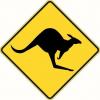I LOVE this procedure.
In less than 3 hours yesterday I sharpened 18 chisels, a combination of bench, paring and butt, PM-V11and white steel. A few were chipped so I had to start with coarser stones and work up to the 1000 stone. I found that I could tell when I had buffed properly when I saw the thin bright line along the edge and that I should recharge the wheel more often than I expected. I tested each chisel after sharpening and they all cut whisper thin shavings of maple.
If I'd used the way I had been sharpening I'd still have a good number of them to do today. Thanks to all that passed along the information.
Cliff
The problem with the world is that intelligent people are full of doubts, while the stupid ones are full of confidence.
Charles Bukowski





 Reply With Quote
Reply With Quote




